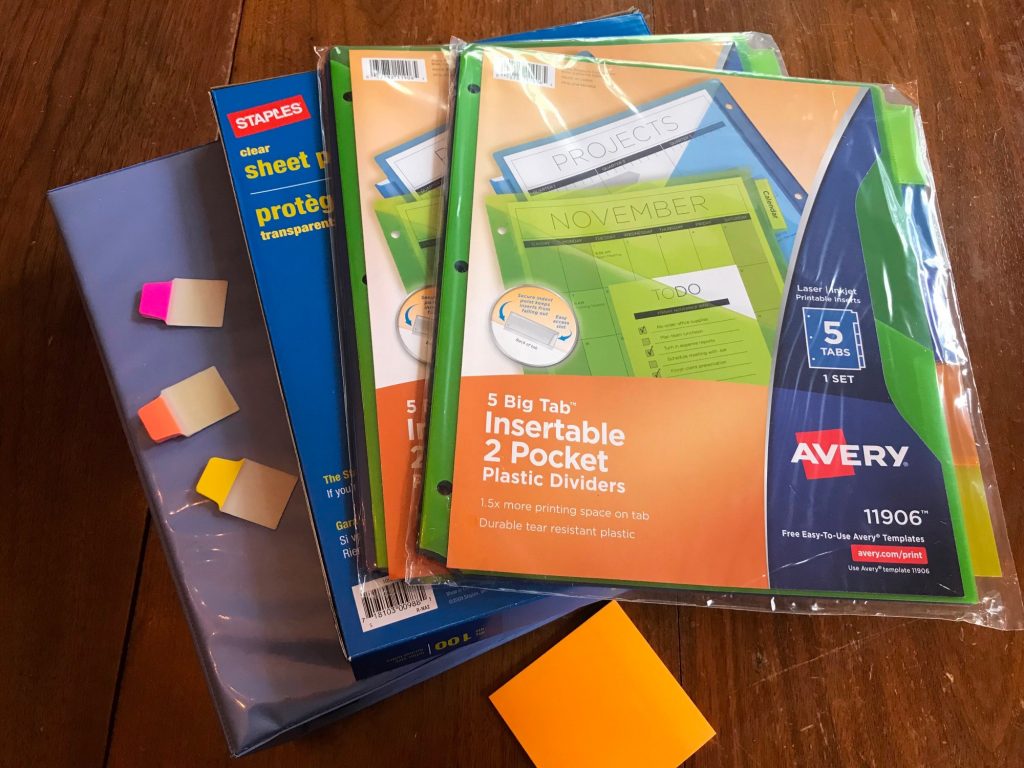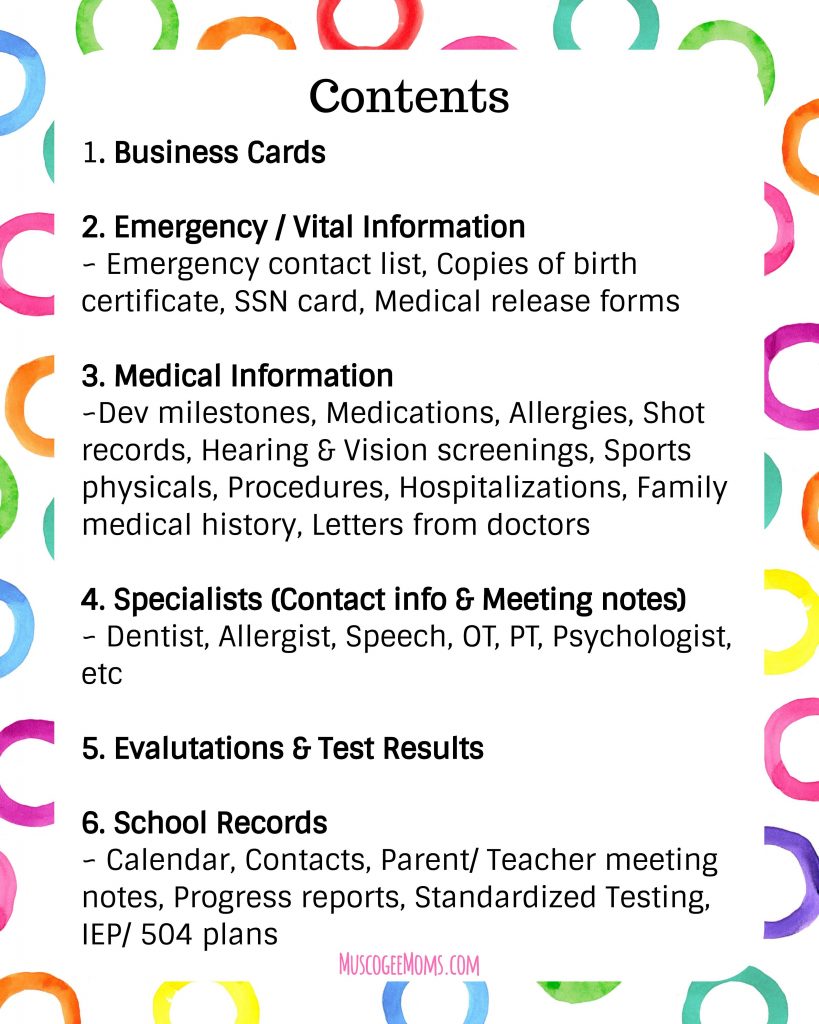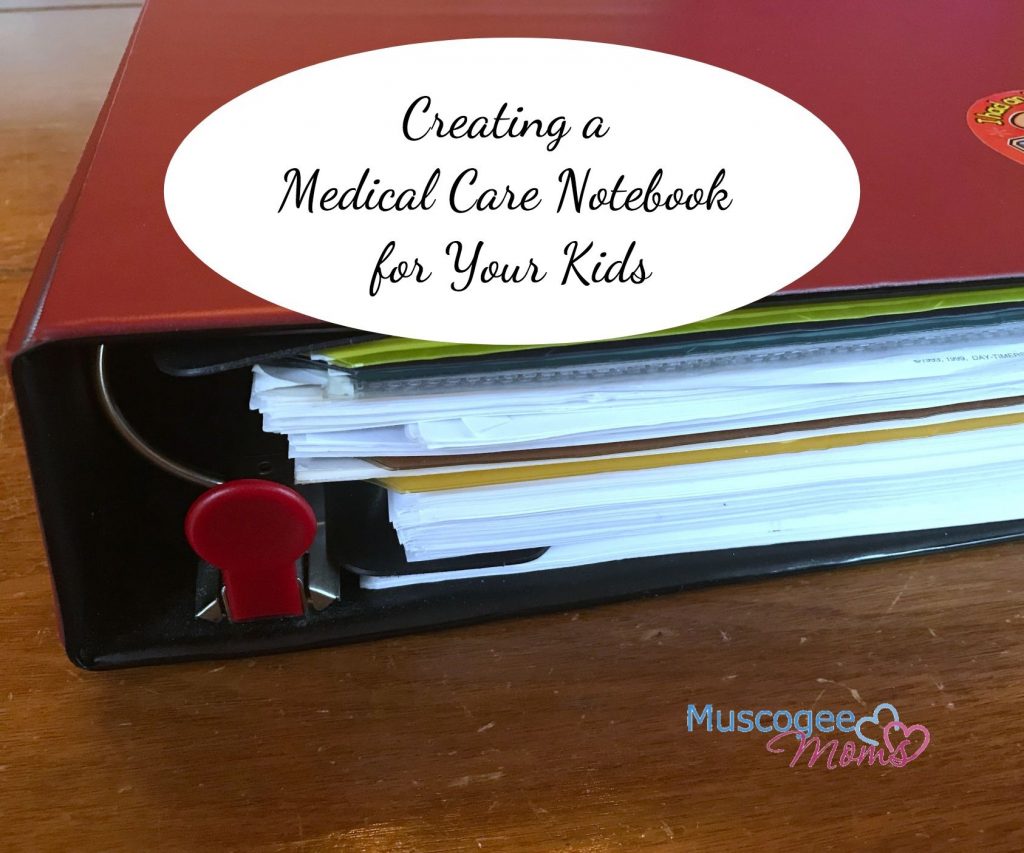Keeping Track of Your Kids’ Medical Care
As parents, we are frequently asked about our kids’ developmental (and other) milestones. And if you are like me, you sometimes forget the details. The older my kids get, the foggier my memory seems to be.
Nobody warned me that part of motherhood was remembering every… little… detail… about my children’s medical history. Especially when raising a child with special needs.
So how do I manage? I keep a medical care notebook.
I created a notebook shortly after my oldest, then 3, was diagnosed with pervasive developmental disorders not otherwise specified (PDD-NOS). Keeping track of his appointments and therapies, in addition to my baby’s well visits, made it painfully clear that I needed to get control of the information overloading my brain.
What is a medical care notebook?
Basically, a medical care notebook is a binder where you keep track of your child’s health care, i.e., shot records, doctor visits, milestones, medications, test results… everything!
It can help you keep track of phone calls, prepare for appointments, and share new information and test results with other caregivers. It is especially helpful if you are juggling specialists and visits to different medical facilities.
Creating a medical care notebook for your kids is very simple and something you can start today in a very short amount of time. Here are four key steps.
STEP 1: Decide what you want to keep in the notebook.
What information do you look up most often? What do people who care for your child need to know about your child? Do you have a child with special needs? The information in your binder will vary depending on your child’s age and specific needs.
I suggest you include emergency numbers, lists of your child’s medications, including allergies, and developmental milestones. I also suggest you include your family medical history, a running list of appointments, any evaluations, your notes from each visit, contact information for healthcare providers, and (depending on your child’s age) daily routine instructions.
You may also want to include your child’s school progress reports, 504 plan, IEP, etc.
STEP 2: Assemble your supplies.
I suggest starting with a 1.5-inch binder (3-rings) with side pockets, plastic sheet protectors, and tabbed dividers to separate the pages and make it easy to find the information you need.

Binder tabs are the quickest way organize your notebook and find what you need in a pinch. I personally prefer the Avery Big Tab Insertable Two-Pocket Plastic Dividers, with 5 or 8 Multicolor Tabs. The pockets are an excellent place to put medical scripts or to place doctor’s notes until you get home. You can purchase them online or at any office supply store.
Depending on how much information you need to track, you may want to add a sub-divider within your tabbed sections. I ended up including top tab dividers in my Specialist section to separate my notes from each specialist.
STEP 3: Organize the contents
I suggest starting with the American Academy of Pediatrics’s Medical Home Project website. They have gone the extra mile and compiled a list of tools, resources, and links to information and instructions for building a care notebook. Simply click the Tools & Resources menu to navigate to the “For Families and Caregivers” section.
There are dozens of websites with printables that you can download to help create your care notebook. Simply google “medical binder template” and you’ll be swimming in options! You can download a template, or design your own.
Once you have everything you need, it’s time to put together your notebook. Depending on your family circumstances, your tab dividers will likely be different than mine. But here are a list of suggested tabs to get you started – feel free to adjust to your family’s needs.

TIP: Obtain business cards from every physician, specialist, testing facility, lab, and therapist you visit. Store these cards in a business card page at the front of your binder. You can download a printable version of this Index HERE.
STEP 4: Bring the care notebook to appointments and meetings.
Take your child’s medical care notebook with you to any appointments and meetings, and (even) vacations. This will help you to share accurate information and keep track of new information you are given. And when you’re asked an obscure question, you will have the answer at your fingertips.
If you prefer not to lug a hefty binder around, you may want to scan or take photos of the documents you refer to most often and keep a copy on your iPad or smartphone. Storing medical information online is a tricky business, but there are a several of ways to store your data securely while letting others access it in case of emergencies.
You may not think that you will ever fill a 3-inch binder with your child’s healthcare information but you will be surprised at how quickly space goes. Keep in mind, the contents of your binder will change as your children grow older. My binders look vastly different today, compared to when my kids were little. Archive the older information in an accordion style file organizer or in a storage bin, or whatever works best for you.
Resources:
American Academy of Pediatrics Medical Home Project’s Care Notebook.



